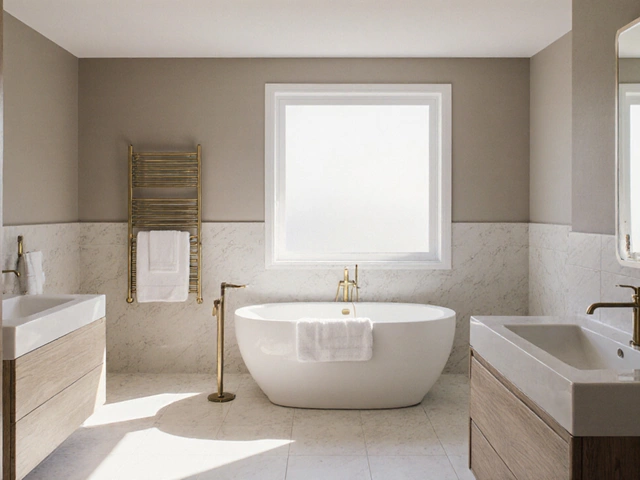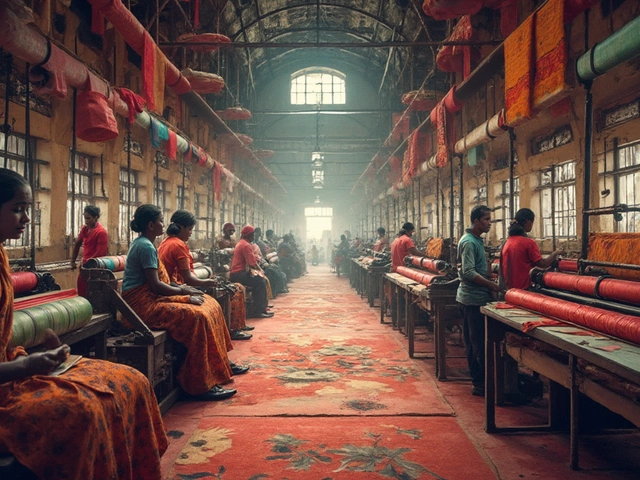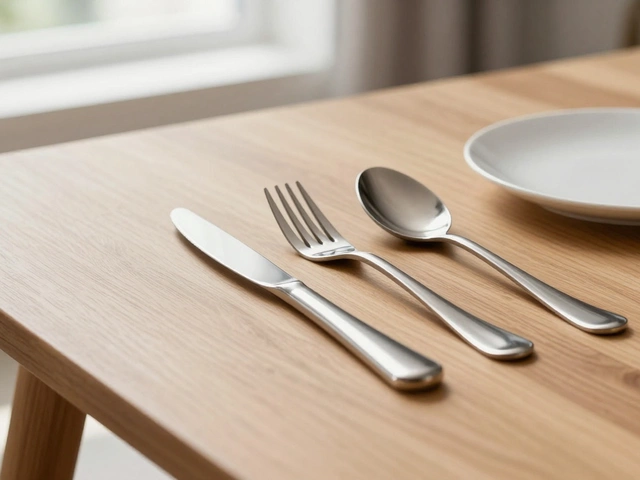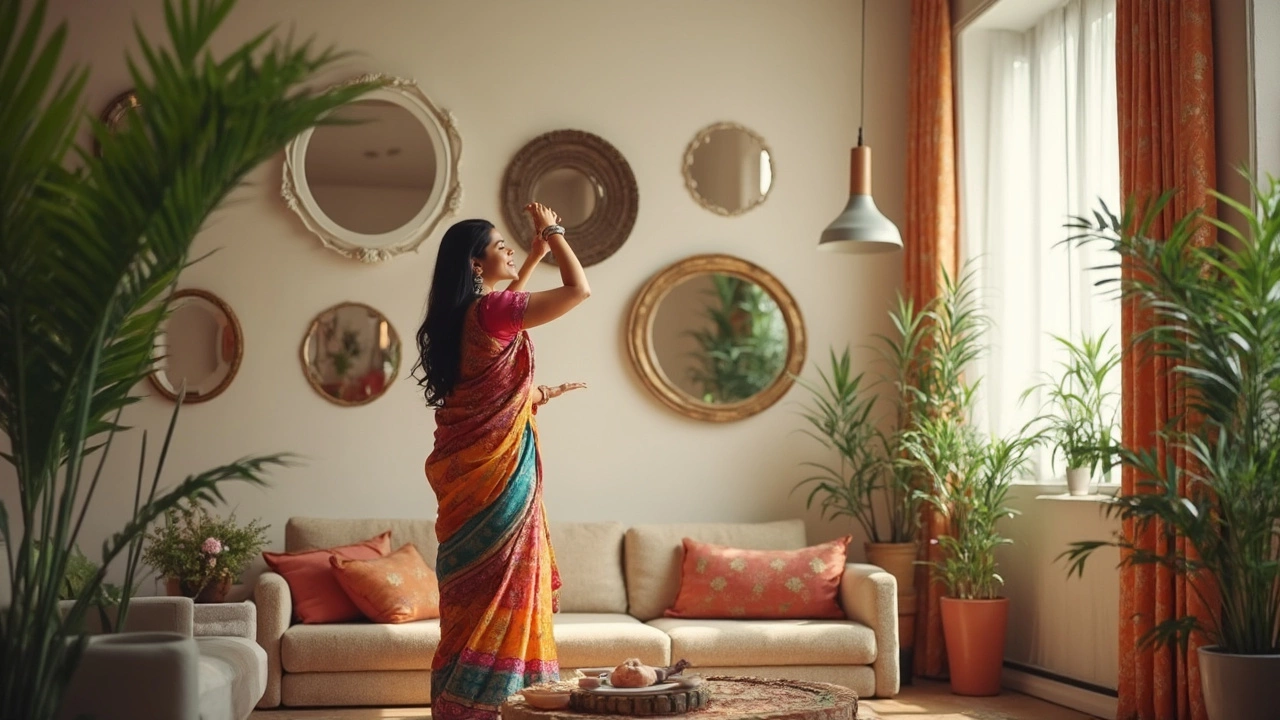
Getting a mirror isn’t just about finding something to check your hair in. The shape you pick can totally change how a room feels, looks, and even how big it seems. A round mirror above a bathroom vanity makes everything feel softer and more casual. Rectangular mirrors? They’re the go-to for making narrow spaces like hallways seem bigger.
Most people just grab anything that fits the wall, but a mirror’s shape needs to line up with what you actually want for the room. Want something that screams “look at me”? Go with an unexpected, funky outline and you’ll get people talking. Need a calm and classic spot? You can’t go wrong with simple, clean lines.
Here’s a trick most designers use: match mirror shapes to the room’s vibe. Have lots of sharp corners and straight lines? Try something round to soften things up. Got a ton of curves already? A square or rectangular mirror adds some peace and order.
- The Big Deal About Mirror Shapes
- Classic Shapes: What Works and Where
- Funky and Unusual Mirrors: When to Go Bold
- Quick Tips for Getting It Right
The Big Deal About Mirror Shapes
So, why does mirror shape even matter? Most folks don't realize it, but the outline of your mirror totally messes with how your space feels. Turns out, our brains love patterns—and anything that stands out catches our attention instantly. The mirror becomes the boss of the wall. Want your room to look taller, wider, or just more pulled together? The shape you pick does most of the heavy lifting.
Take a hallway, for example. Stick a tall, skinny rectangular mirror in there, and the entire space stretches upwards. Place a big circle in the same spot, and the tension melts away—it feels more chill, less like a racetrack. Oddly enough, studies done by home improvement brands show that over 60% of people say their favorite mirror is the thing they notice first when they walk into a room.
The right mirror shape doesn't just add style. It can bounce around light, double up outdoor views, or trick your eye into thinking a tight space has room to breathe. Designers lean on this trick all the time to fake windows or draw attention away from awkward wall angles.
"A mirror’s outline is like a frame for your space. It gives structure or softness in all the right places. Never just pick a shape without considering the room’s vibe."
— Nate Berkus, interior designer
If you’ve got a small, boxy room, picking a round mirror softens corners and makes things less boxy. In rooms with wild wallpaper or busy art, a simple square or rectangle balances things out. Here’s the thing: matching or purposely clashing shapes changes the whole feel, and that’s why you see so many round vs rectangular mirror debates online.
It isn’t just about looks, either. Check this quick breakdown of how shapes affect vibe and function:
| Shape | Common Effect | Best Where? |
|---|---|---|
| Rectangle | Makes rooms seem taller or wider, structured feel | Bathrooms, entryways, living rooms |
| Round | Adds softness, creates a casual, welcoming vibe | Bedrooms, above consoles, awkward corners |
| Oval | Blend between sharp and soft, good for symmetry | Dressers, vintage spaces |
| Unusual/Asymmetrical | Instant statement, draws eye, breaks up monotony | Art walls, modern apartments, kid spaces |
When you’re picking your next mirror, let the shape do the work. Don’t just play it safe—if you want your space to actually feel different, starting with the outline is one of the fastest ways to pull it off.
Classic Shapes: What Works and Where
When it comes to mirror shape, the classics really stick around for a reason. Rectangular and round mirrors are what you see most often, and each one brings something different to the table—literally and style-wise.
Rectangular mirrors are everywhere for a reason. They make rooms look taller or wider depending on whether you hang them vertically or horizontally. That’s why you see them above sinks in bathrooms, or longways in living rooms and hallways. If you want a space to feel bigger or tidier, a rectangle is your best bet. These usually work best in rooms with lots of straight lines—think modern bathrooms or minimalist bedrooms.
On the flip side, round mirrors are all about breaking up the harshness of right angles. Designers use them to add some chill, soft energy to a space. You’ll spot these a lot in entryways, tiny powder rooms, and even over dressers in bedrooms. If your place feels boxy or cold, a round mirror can cozy it up fast.
There are also square mirrors, which give you the order of rectangles without making a room feel too formal. They’re awesome for gallery walls or any spot you want to keep looking organized but not stiff.
To help you see where each shape really shines, check this out:
| Mirror Shape | Common Spots | Why It Works |
|---|---|---|
| Rectangular | Bathrooms, hallways, mantels | Makes walls feel longer or ceilings feel higher |
| Round | Entryways, vanities, above dressers | Softens straight edges, adds a laid-back vibe |
| Square | Gallery walls, modern living rooms | Keeps things tidy, but less formal |
When you’re picking, it’s not just about what looks cool. It’s about how the mirror shape works with the rest of your stuff. Think about furniture, doorways, and natural light before making the call. The right shape can make a small room pop or take a plain hallway straight out of snooze territory.
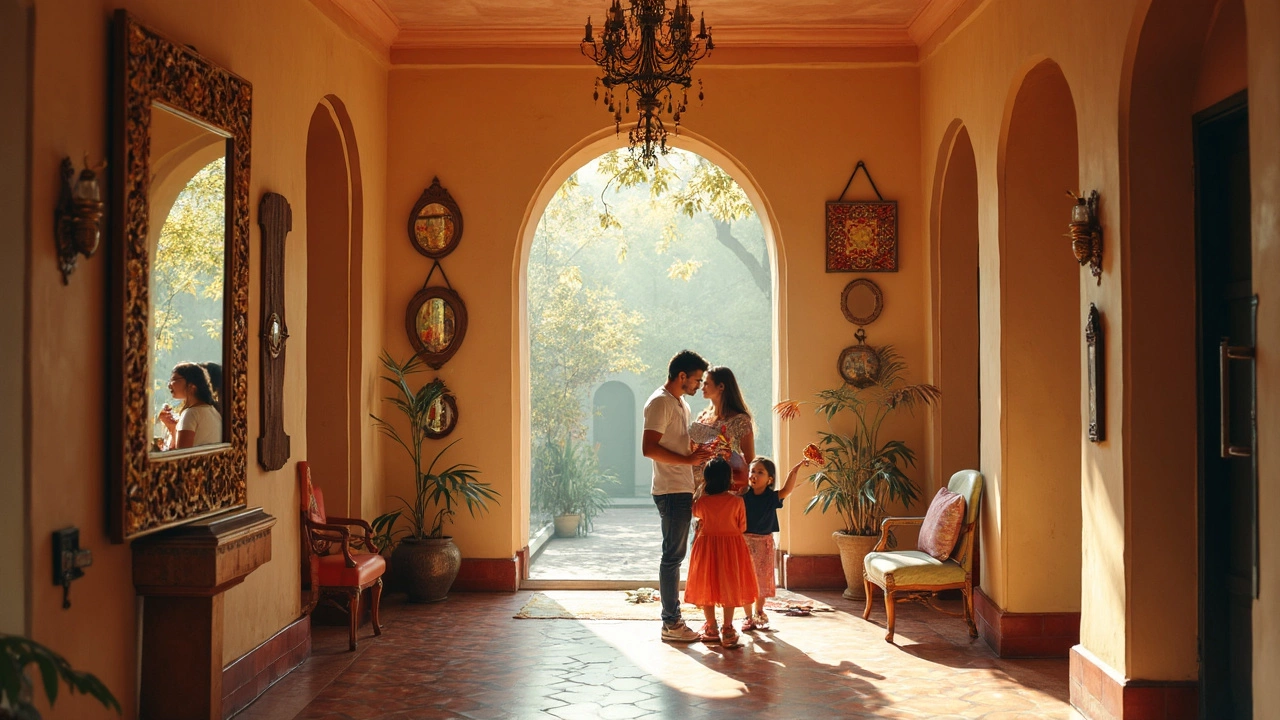
Funky and Unusual Mirrors: When to Go Bold
Sometimes playing it safe is just boring. If you want your space to stand out, a funky mirror shape can totally flip the vibe. Think about wavy frames, asymmetrical blobs, modern geometric shapes, or even mirrors that look like a puddle or a sunburst.
According to a design report from Houzz (2024), bold statement mirrors have jumped by 35% in designer projects over the last year. People aren’t just using mirrors for function anymore—they want a piece that gets noticed the minute you walk in.
“Unique mirrors act like artwork; they turn otherwise plain walls into main attractions,” says Trish Edwards, senior designer at HomeDesignLab.
The best places for a quirky mirror? Here are some easy wins:
- Entryways: First impressions matter. A cool-shaped mirror gives instant style without needing loads of space.
- Living rooms: Above a couch or mantel, a statement mirror can take the place of pricey art.
- Bathrooms: They’re small, so a bold mirror won’t overwhelm the space but adds loads of personality.
Just don't go overboard—one bold mirror per room is enough. Too many funky shapes can get chaotic fast. Pair your unusual mirror with simple decor around it, so it actually stands out rather than turns the whole wall into a visual mess.
Bonus tip: Odd shapes can sometimes mess with reflection quality. If you need a mirror for grooming or makeup, make sure the mirror shape works for basic tasks, not just looks.
| Mirror Style | Best Room | Extra Benefit |
|---|---|---|
| Asymmetrical blob | Living room | Great conversation starter |
| Sunburst | Entryway | Adds visual warmth |
| Geometric | Home office | Gives modern edge |
So, if your home already feels a bit flat or plain, breaking tradition with a funky mirror is low-risk but high-reward. You’ll be surprised how often it gets a comment—or just puts you in a better mood every time you walk by.
Quick Tips for Getting It Right
Picking the best mirror shape isn’t about guessing and hoping it turns out okay. If you want results that look good in real life (not just in photos), here’s what works.
- Size matters: Your mirror should be big enough to be useful, but not so huge it overwhelms everything. For bathroom vanities, aim for a mirror that’s a few inches smaller than your sink or vanity width. For entryways, go a bit bigger to make the space feel inviting.
- Shape should follow function: Round mirrors create a softer, more relaxed vibe—awesome for bedrooms or bathrooms. Straight lines, like rectangles and squares, work if you want a cleaner, more classic look. Want drama? Try an organic or geometric shape for an instant statement.
- Think about the view: Place mirrors where they reflect something nice—like a window, plant, or piece of art. You don’t want a gorgeous mirror showing off a pile of laundry.
- Mounting height: Hang mirrors so the center sits at about eye level for most people—around 57–65 inches off the floor. Over the sofa or console table, keep the bottom edge about 6–8 inches above the top of the furniture.
- Don't forget the light: If your space feels dark, a mirror placed across from a window bounces light around and makes everything feel brighter. This trick is why you see so many mirrors in small urban apartments.
Want a quick reference? Check out this super-simple mirror size chart for common spots:
| Location | Best Mirror Size | Popular Shape |
|---|---|---|
| Bathroom Vanity (Single Sink) | 22–28" wide | Round or Rectangle |
| Entryway | 24–36" diameter or width | Round or Oval |
| Living Room (Over Sofa) | 36–48" wide | Rectangle |
| Bedroom (Above Dresser) | 24–36" wide | Round, Rectangle, or Arched |
The bottom line? Use the shape and size of your mirror to solve a problem or highlight something cool in the room. Don’t stress over “the rules”—but a few game-tested tips don’t hurt if you want things to look intentional.
